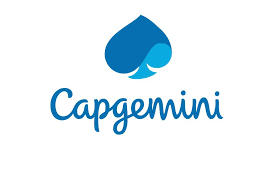Nutrition In Plants Chapter 1 Class 7 Science
Nutrition In Plants Chapter 1 Class 7 Science
Lectures -5
Duration -29 mins

Get your team access to 10000+ top Tutorials Point courses anytime, anywhere.
Course Description
1. Why do organisms take food?
2. Distinguish between a parasite and a saprotroph.
3. How would you test the presence of starch in leaves?
4. Give a brief description of the process of synthesis of food in green plants.
5. Show with the help of a sketch that plants are the ultimate source of food.
6. Fill in the blanks: (a) Green plants are called _________________ since they synthesize their own food.
(b) The food synthesized by plants is stored as _________________.
(c) In photosynthesis solar energy is absorbed by the pigment called ___________.
(d) During photosynthesis plants take in ______________________ and release __________________ gas.
7. Name the following:
(i) A parasitic plant with yellow, slender and branched stem.
(ii) A plant that is partially autotrophic.
(iii) The pores through which leaves exchange gases.
8. Tick the correct answer:
(a) Cuscuta is an example of:
(i) autotroph (ii) parasite (iii) saprotroph (iv) host
(b) The plant which traps and feeds on insects is:
(i) Cuscuta (ii) china rose (iv) pitcher plant (iv) rose
9. Match the items given in Column I with those in Column II:
Column I Column II
Chlorophyll Rhizobium
Nitrogen Heterotrophs
Cuscuta Pitcher plant
Animals Leaf
Insects Parasite
10. Mark ‘T’ if the statement is true and ‘F’ if it is false:
(i) Carbon dioxide is released during photosynthesis. (T/F)
(ii) Plants which synthesis their food are called saprotrophs. (T/F)
(iii) The product of photosynthesis is not a protein. (T/F)
(iv) Solar energy is converted into chemical energy during photosynthesis. (T/F)
11. Choose the correct option from the following:
Which part of the plant takes in carbon dioxide from the air for photosynthesis?
(i) Root hair (ii) Stomata (iii) Leaf veins (iv) Petals
12. Choose the correct option from the following: Plants take carbon dioxide from the atmosphere mainly through their:
(i) roots (ii) stem (iii) flowers (iv) leaves
13. Why do farmers grow many fruits and vegetable crops inside large green houses? What are the advantages to the farmers?
Prerequisites
- The aim of the course is to ensure that the students are able to understand the topic of Nutrition in Plants in a very easy manner.

Curriculum
Check out the detailed breakdown of what’s inside the course
Nutrition In Plants Chapter 1 Class 7 Science
5 Lectures
-
Nutrition In Plants Chapter 1 Class 7 Science 02:53 02:53
-
Why do organisms take food? 08:58 08:58
-
Show with the help of a sketch that plants are the ultimate source of food. 08:13 08:13
-
Match the items given in Column I with those in Column II: 02:31 02:31
-
Q. 10. Mark ‘T’ if the statement is true and ‘F’ if it is false: 07:19 07:19
Instructor Details

Prabh Kirpa Classes
Course Certificate
Use your certificate to make a career change or to advance in your current career.

Our students work
with the Best


































Related Video Courses
View MoreAnnual Membership
Become a valued member of Tutorials Point and enjoy unlimited access to our vast library of top-rated Video Courses
Subscribe now
Online Certifications
Master prominent technologies at full length and become a valued certified professional.
Explore Now



 Updated on Jul, 2024
Updated on Jul, 2024
 Language - English
Language - English
